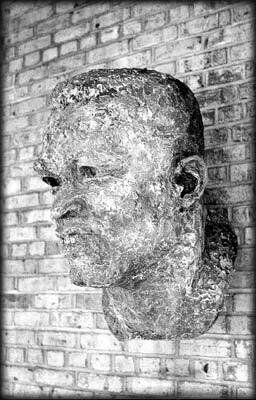Jackie Robinson Parkway
Jackie Robinson Parkway
The New York City parkway system is the collective work of two prominent park minds of the modern age, Frederick Law Olmsted (1822-1903) and Robert Moses (1888-1981). Olmsted is best known for designing Central Park (1861) with Calvert Vaux (1824-1895), but his impact on the future of city planning competes with even that monumental achievement.
During the second half of the 19th century, Olmsted emerged as the nation’s foremost advocate of public parks in urban locales. He recognized the ill effects of overcrowding in America’s cities, attributing poor health, unsanitary conditions, and crime to the smothering effect of urban landscapes. He sought to improve the quality of city life through the addition of parks, which, he theorized, would replicate the unbridled tranquility of nature.
During the 1860s, Olmsted envisioned a system of parks connected via a new style of roadway called the “parkway.” To accommodate an increasing number of park-goers, the parkway divided traffic according to purpose. The center thoroughfare, beautified by landscaped greenery, was only for private vehicles. Local access streets ran alongside the main roadway to service local and commercial traffic, and the elimination of traditional intersections further reduced vehicle congestion. The parkway’s scenic qualities made them extensions of the parks they were connecting.
Inspired by Olmsted, Robert Moses, as chairman of the New York State Emergency Public Works Commission, sponsored the construction of the Interborough Parkway (now Jackie Robinson Parkway) in 1933. The roadway was paid for in part by the New Deal public works projects of the 1930s and was a component of Moses’s “great parkway plan” developed in 1924. The plan increased automobile access to the five boroughs as well as to Westchester and Long Island, binding together the greater metropolitan region outlying city areas and creating unrivaled access to recreation areas. In total, the plan eventually built 16 parkways in the New York metropolitan area.
In 1936, the Interborough, Laurelton, and Grand Central Parkways were completed, along with the Triborough Bridge. Intended for early highway travel, Interborough’s design featured a 35 miles-per-hour speed limit and tight curves. Builders faced several challenges, the most serious of which required some exhumations at Cypress Hills and Mount Carmel Cemeteries. The roadway feeds the Grand Central Parkway and provides access to Forest and Highland Parks.
In May 1997, the Interborough Parkway was renamed the Jackie Robinson Parkway to honor the 50th anniversary of Robinson’s entrance into Major League Baseball as the first player to break the color barrier. Robinson’s defiance of racial segregation initiated in the Army practices of World War II. He refused to play on the Fort Hood (Texas) football team after being forced to sit in the rear of an Army transport. After the war, he played for the Kansas City Monarchs baseball team, in the Negro League. Robinson’s outstanding play attracted the attention of Brooklyn Dodger scouts. After secretive negotiations, Robinson signed with the Dodger’s farm team in Montreal. On April 9, 1947, he was promoted to the majors as a second baseman. During his ten-year career, the Hall of Fame member batted .311, had 1,518 hits in 1,382 games, played in six World Series, and stole 197 bases. Robinson’s dedicated play and the poise with which he handled his role have made him a hero and a legend.

Check out your park's Vital Signs
Clean & Safe
Green & Resilient
Empowered & Engaged Users
Share your feedback or learn more about how this park is part of a
Vital Park System
